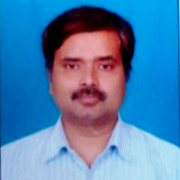
Neeraj Tripathi
Work place: Department of Electronics and Communication Engineering, Shri Mata Vaishno Devi University,Kakryal-182320, India
E-mail: neeraj.tripathi@ieee.org
Website:
Research Interests: Computational Science and Engineering, Computer systems and computational processes, Computer Architecture and Organization, Data Structures and Algorithms, Analysis of Algorithms, Models of Computation
Biography
Neeraj Tripathi is working as Assistant Professor in the Department of Electronics and Communication Engineering at Shri Mata Vaishno Devi University. He has completed B.E in Electronics and Communication Engineering from Madan Mohan Malaviya Engineering College, Gorakhpur followed by M.Tech(Microelectronics and VLSI Design) from Indian Institute of Technology, Kharagpur(IIT, Kharagpur). Mr. Neeraj Tripathi has also completed Professional Degree of Second Level in NEMS/MEMS from University of Trento, Italy. He initiated the course on the MEMS at undergraduate level and post graduate level at SMVDU, Katra. He has vast teaching experience in the field of VLSI, Microelectronics, MEMS, IC fabrication both at undergraduate and post graduate level. Prior to joining SMVDU, he has worked in several universities. He did research at the University of Trento, Italy in the field of radiation micro detectors. He has published several papers in peer- reviewed journals and conferences.
His present research areas include TCAD Modeling, Neuroprosthetics, Implantable microelectrodes and devices, BMI, stimulation and recording of brains, VLSI, Semiconductor modeling, Multiphysics modeling.
Author Articles
Microcantilever: An Efficient Tool for Biosensing Applications
By Diksha Sharma Neeraj Tripathi
DOI: https://doi.org/10.5815/ijisa.2017.10.08, Pub. Date: 8 Oct. 2017
Most of the biosensing applications involving analysis and detection of a particular specimen demands fast, easy to use, less expensive, highly reliable and sensitive method for the recognition of biomolecules. The reason behind this increasing demand is that most of the available laboratory equipment require large space, are highly expensive and have other preconditions. Most of the viscometers available for measuring the rheological properties of blood require cleaning after each use which can be challenging due to the capillary geometry. The substitute to this is microcantilever that has emerged as an ideal candidate for biosensing applications. Microcantilever is capable of being used in air, vacuum or liquid medium. This paper consists of seven sections in which working principle of a cantilever, different modes of vibration, their comparative analysis, analytical equations of hydrodynamic equations exerted by the fluid on the cantilever and their impact on the resonant frequency and quality factor, applications of microcantilever in liquid medium specifically in biomedical field are discussed.
[...] Read more.Other Articles
Subscribe to receive issue release notifications and newsletters from MECS Press journals